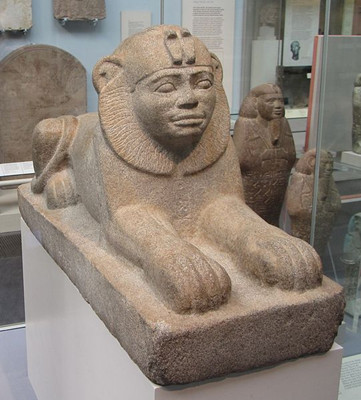Taharqo was eager to expand Egypt beyond Sinai and its north-east border-an aggressive policy that led to conflict with the Assyrian king, Sennacherib-whose stone reliefs were the subject of the last programme.
塔哈尔卡急于扩张西奈半岛及东北边境的领土。这一富有侵略性的政策导致了与亚述王西拿基立的冲突。
Around 700 BC Taharqo allied himself with Hezekiah, King of Judah, and fought alongside him.
约公元前七百年,库施与犹大国王希西家结盟,并肩作战。
But this challenge to the Assyrian war machine ultimately led to Taharqo's downfall.
但对亚述战争机器的挑战导致的最终结局是塔哈尔卡的垮台。
Ten years later, the Assyrians came looking for him, seeking the colossal wealth of Egypt, and although he repelled them that time, they soon returned.
十年后,亚述入侵埃及,对埃及的巨大财富虎视眈眈。虽然这次塔哈尔卡赢得了胜利,但亚述人很快便卷土重来。
In 671 BC they forced Taharqo to flee south to his native Kush.
公元前六七一年,亚述人迫使他逃回了故土库施。
He lost his wife and his son to the enemy and, after more attacks from the Assyrians, he was finally expelled.
他的妻儿都落入敌手。最终,在亚述的数次进攻后,他遭到了放逐。
In the long history of Egypt, Kushite rule was a brief interlude of not even 150 years.
在埃及的漫长历史中,库施人的统治不过是一段不超过一百五十年的小插曲。
Yet it reminds us that the border between what is now Egypt and Sudan is a constant fault-line, both geographic and political, that has frequently divided the peoples of the Nile Valley, and frequently been fought over.
但这段历史提醒我们,埃及与苏丹之间的国界线不仅是一条地理上的断层线,也是政治上的。这条线时常分隔着尼罗河流域的人民,同时也不断引发争夺。
We'll see that fault-line again later in these programmes, because both the Roman and the British empires bloodily revisited this contested boundary between Egypt and Kush.
之后我们还会再看到它的身影, 因为罗马人与大英帝国都曾再度血洗埃及与库施之间这条纷争不断的分界线。
Geography has determined that this will always be a frontier, because it's here that the first cataract breaks up the Nile into small, rocky channels that are very hard to navigate, making contact between north and south highly problematic.
地理因素使它成为一条天然的分界线,在此处,第一瀑布把尼罗河分成了数条布满岩石、难以航行的细流。南北方的交流因而困难重重。



